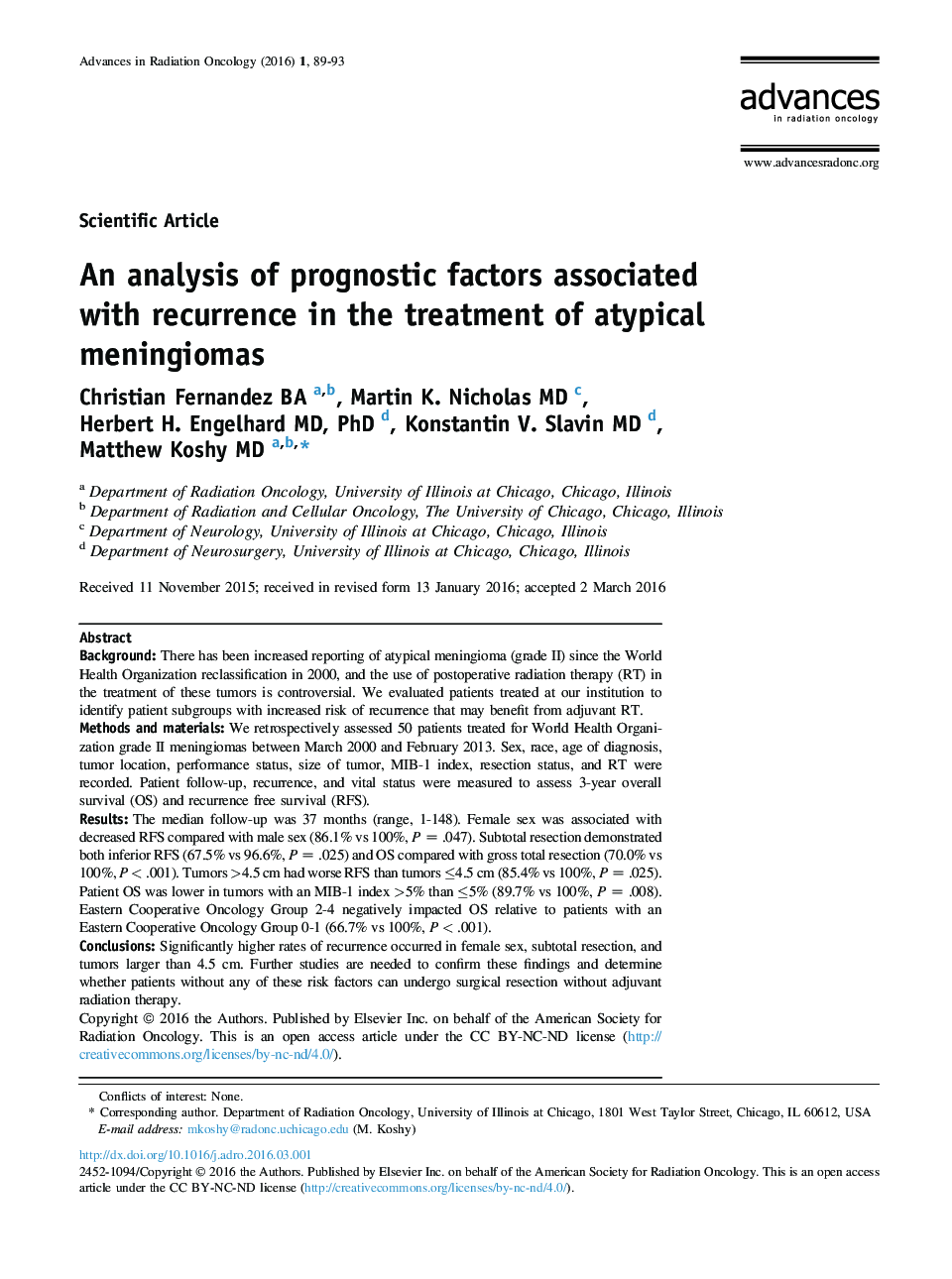| Article ID | Journal | Published Year | Pages | File Type |
|---|---|---|---|---|
| 3976392 | Advances in Radiation Oncology | 2016 | 5 Pages |
BackgroundThere has been increased reporting of atypical meningioma (grade II) since the World Health Organization reclassification in 2000, and the use of postoperative radiation therapy (RT) in the treatment of these tumors is controversial. We evaluated patients treated at our institution to identify patient subgroups with increased risk of recurrence that may benefit from adjuvant RT.Methods and materialsWe retrospectively assessed 50 patients treated for World Health Organization grade II meningiomas between March 2000 and February 2013. Sex, race, age of diagnosis, tumor location, performance status, size of tumor, MIB-1 index, resection status, and RT were recorded. Patient follow-up, recurrence, and vital status were measured to assess 3-year overall survival (OS) and recurrence free survival (RFS).ResultsThe median follow-up was 37 months (range, 1-148). Female sex was associated with decreased RFS compared with male sex (86.1% vs 100%, P = .047). Subtotal resection demonstrated both inferior RFS (67.5% vs 96.6%, P = .025) and OS compared with gross total resection (70.0% vs 100%, P < .001). Tumors >4.5 cm had worse RFS than tumors ≤4.5 cm (85.4% vs 100%, P = .025). Patient OS was lower in tumors with an MIB-1 index >5% than ≤5% (89.7% vs 100%, P = .008). Eastern Cooperative Oncology Group 2-4 negatively impacted OS relative to patients with an Eastern Cooperative Oncology Group 0-1 (66.7% vs 100%, P < .001).ConclusionsSignificantly higher rates of recurrence occurred in female sex, subtotal resection, and tumors larger than 4.5 cm. Further studies are needed to confirm these findings and determine whether patients without any of these risk factors can undergo surgical resection without adjuvant radiation therapy.
